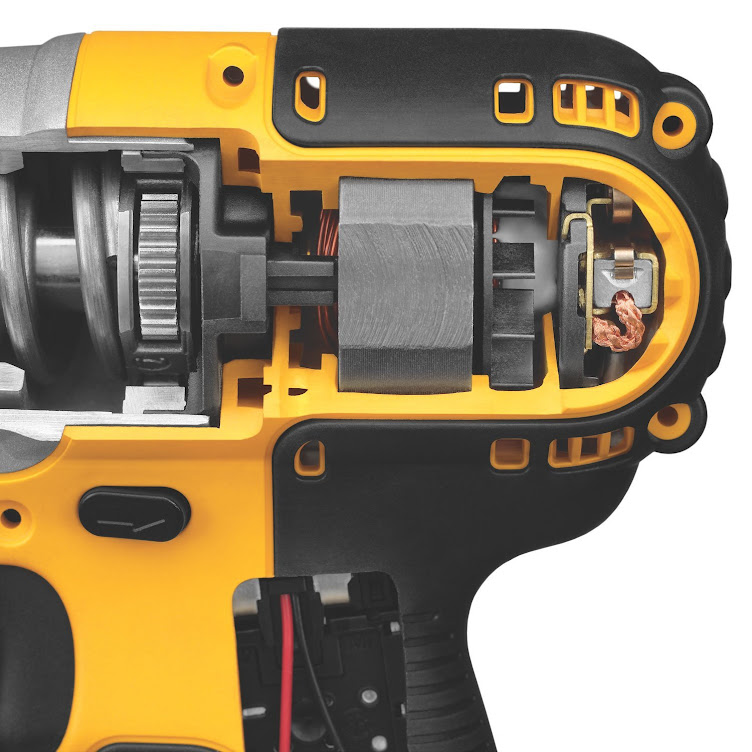We’ve reviewed a few different laser measuring devices on this site and have seen everything from the very basic to the most advanced. The Leica Disto E7400x finds itself slap bang in the middle as a highly accurate laser measuring tool but without the flamboyant extras such as the camera for outdoor use.
Product Description: Accurate and Solidly Built
We’ve used a few of these devices in our reviews and as always, the Leica Disto E7400x impresses with its build quality. The company proudly boasts that you can drop the gadget from 2 meters without causing any damage and as soon as you hold it, you’ll believe it! Add in the IP65 certified water and dust protection and you have a device that should last as long as you need it to.
The actual appearance is less impressive. It looks a lot like an old phone and is small, boxy and rubber. At least the small size is compact and easy to carry around – and the red and black make for a nice colorscheme.
To use the Leica Disto E7400x, you simply pull out the folding extension at one end and then use that to lay it flat against whatever you want to measure – whether that’s a piece of wood or an alcove in a room. Either way, it will then present you with a highly accurate reading that you can take to the bank.
The device is capable of 1/16” accuracy at 265 feet and also includes height tracking, smart horizontal and more algorithms and sensors to ensure it knows where it is pointing and what angle you have it at. It will remember its last 20 measurements and is quick and easy to use.
Pros and Cons: Basic but Good
 So, there are no high end features here. A 20 item memory isn’t exactly amazing and the lack of level is a disappointment. There is also no camera or touchscreen, which is something you would get if you were to fork out for the truly expensive models.
So, there are no high end features here. A 20 item memory isn’t exactly amazing and the lack of level is a disappointment. There is also no camera or touchscreen, which is something you would get if you were to fork out for the truly expensive models.
But then again, these issues may not be a problem depending on your use case scenario. The camera functionality is really mainly useful for outdoor use and is frankly a little slow and awkward in its implementation.
For this price, you’re getting the things that really matter – the top end accuracy and useful features like the tilt sensor for measuring things that you can’t actually reach – point the laser and move it up and down to get the measure of a given banner or wall.
For many people, there just isn’t a need for any more features than that – but this does still represent a marked and useful step up from something like the D110 (the most basic model). And you still get all of the other great benefits that are common from Leica Disto laser measures. We love the inclusion of the IP65 resistance and think that will come in particularly handy in highly dusty home workshops.
We reviewed this over a period of a few weeks and we found it made taking measurements into a quick and easy joy.
Conclusions: A Handy Device to Keep Around
If you’re happy with the boxy design, lack of level and lack of camera functionality, then the Leica Disto E7400x is a very easy measuring tool to recommend. It has all of the most essential features for a product in its category, it is very well made and will stand the test of time.
You know how some products are expensive and yet they come with problems? It might be because they have so many features they keep going wrong, or maybe it’s due to QC issues at the manufacturing plant.
But then on the other hand, you have those ‘old reliable’ tools that just always work. Perhaps it’s a trusty drill driver, or maybe you have an old camera that has been taking awesome pictures for the last 10 years.
The Leica Disto E7400x has potential to be one of those trusty sidekicks and to our mind, offers one of the best balances when it comes to performance, durability and price. It’s not going to break the bank but it has incredible accuracy and it just works.
source http://www.toolerant.com/leica-disto-e7400x-review-a-trusty-sidekick/

 You are going to get plenty of power (consistent power) out of this particular Black and Decker 5 inch random orbital sander. With an OPM rating of just north of 8000, you should be able to tackle all kinds of different jobs from refinishing a porch to sanding down and cleaning pieces of furniture come all the way to tackling the finest sanding jobs necessary for polishing and perfecting coats of polyurethane applied to your latest woodworking project.
You are going to get plenty of power (consistent power) out of this particular Black and Decker 5 inch random orbital sander. With an OPM rating of just north of 8000, you should be able to tackle all kinds of different jobs from refinishing a porch to sanding down and cleaning pieces of furniture come all the way to tackling the finest sanding jobs necessary for polishing and perfecting coats of polyurethane applied to your latest woodworking project.

